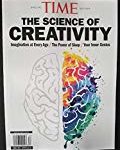Of-the-People Blogging Content Writing

Brand positioning is still important, but ensuring you have the right people to deliver on your brand is, too, Advisa leadership consultant Mandy Haskett points out in a recent Indianapolis Business Journal article. All the ping pong tables in the world won’t be enough to keep people working in roles that don’t align with their own inherent motivating needs, Haskett cautions, talking about talent optimization, which is matching the “job personality” with that of the employee performing that job.
Scott Greggory of Forbes calls it “highlighting your humanity to help your brand stand out”. “If your company sells a certain brand of tires, cell phones, or frozen pizza, you are literally no different from every other establishment that sells the same item,” Greggory says. What differentiates your company and builds loyalty is only a more human experience, he asserts.
Every business class studies the “4 Ps of marketing”: product, price, place, and promotion. As a blog marketing professional, I like what marsdd.com had to say about changing the 4 Ps to four Cs, butting the customer’s interests ahead of those of the marketer:
- Customer solutions (not products)
- Customer cost (not price)
- Convenience (not place)
- Communication (not promotion)
Brian Tracy (one of my longtime heroes back from my National Speakers Association days) has it right, adding a seventh P to his marketing list. “The final P of the marketing mix is people. Develop the habit of thinking in terms of the people inside and outside of your business who are responsible for every element of your sales, marketing strategies, and activities.” Tracy says. “It’s amazing how many entrepreneurs and businesspeople will work extremely hard to think through every element of the marketing strategy and the marketing mix, and then pay little attention to the fact that every single decision and policy has to be carried out by a specific person, in a specific way. “
In Creating Buzz With Blogs, veteran business technology consultant Ted Demopoulos explains, “Blogs create buzz because people will feel like they know you, and people like to do business with people they know.” After more than ten years of writing content for business owners and professional practitioners, I’m absolutely convinced that’s true. People shop for products and services, but when all is said and done, they buy with their hearts. What that means is that the best blogs give readers into a company’s core beliefs, and help readers meet the people inside that company. And, while blogging can help achieve quite a number of goals, including:
- building good will
- staying in touch with existing customers and clients
- announcing changes in products and services
- controlling damage done by negative PR or by complaints
- recruiting employees,
the most important function of your blog is expressing your brand in terms of the people behind it!





Follow us online!